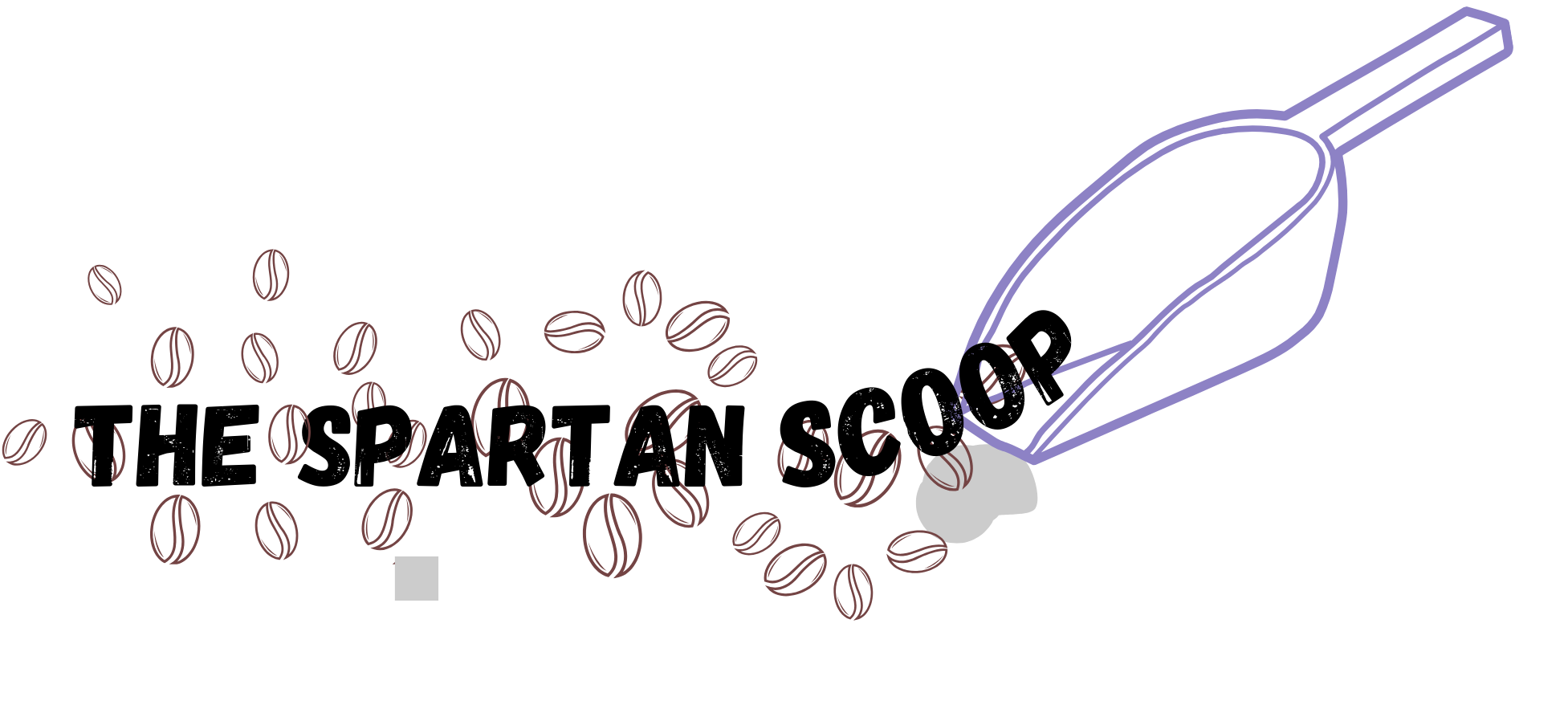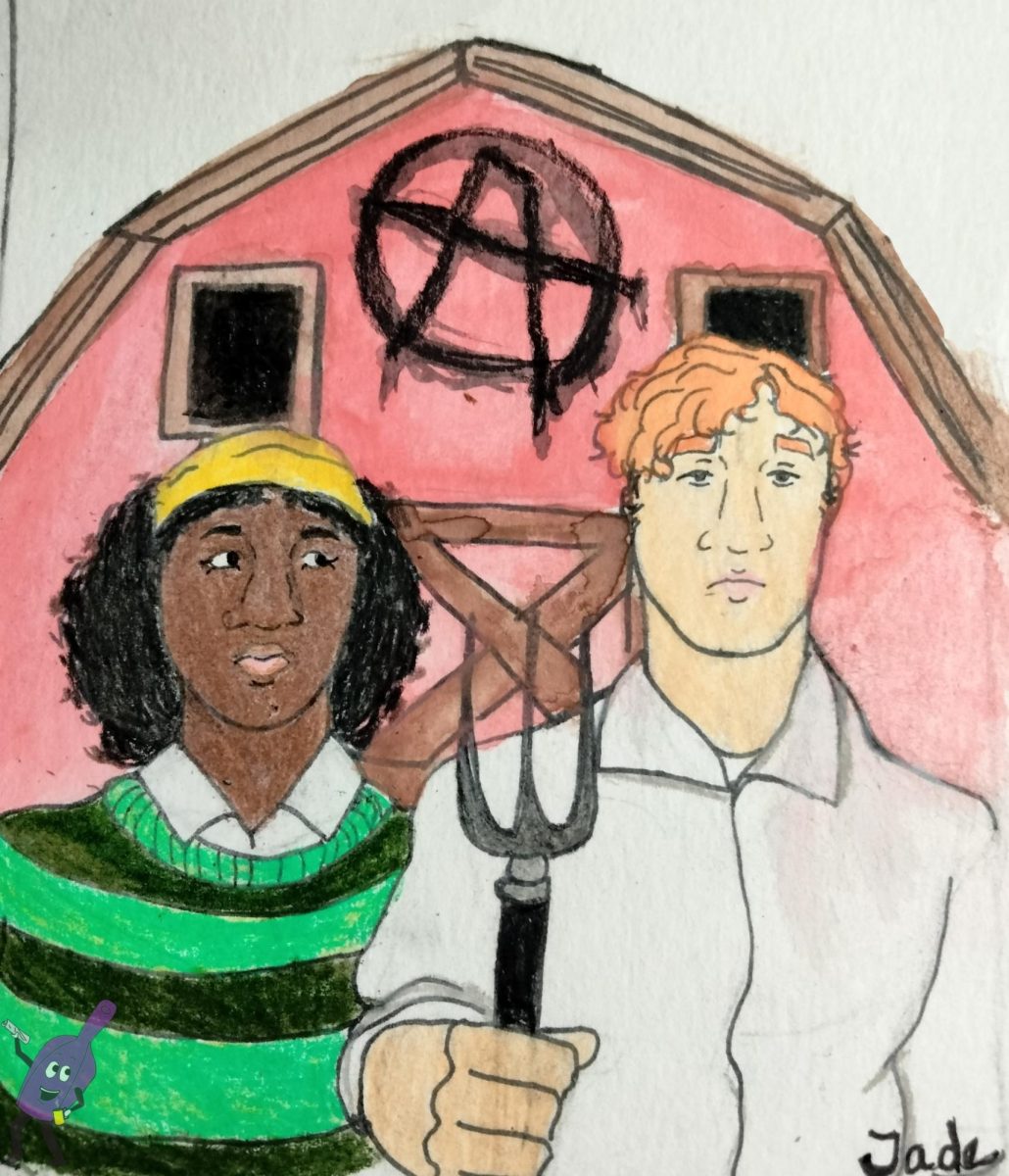The term “anarchy” is generally associated with chaos and violence, however, the theory behind Anarchy is far more complex.
The word “anarchy” can be broken down into its roots, “an”- without, “archy”- rule. Whereas anarchy is often used to describe the “absence or denial of any authority or established order”, we will explore the political theory of anarchism.
Anarchism is generally farthest left and libertarian when viewed on the Political Compass. The Political Compass is a tool popularized by New Zealand journalist Wayne Brittenden. It is a visual aid composed of four quadrants, the axis representing economic left-right, and authoritarian-libertarian.
Anarchism is largely accredited to Pierre-Joseph Proudhon. Proudhon (1809-1865) was a French Socialist journalist. Growing up in poverty he found himself surrounded by wealthy intellectuals during his schooling. He was introduced to socialism in college and wrote many books, including What Is Property? Published in 1840.
Proudhon largely criticized Karl Marx’s theories of communism, citing the totalitarian trends and lack of liberty in Marxism. Karl Marx (1818-1883) was a writer and economist. He was the author of The Communist Manifesto and Das Kapital, two of the most notable pieces of communist literature. Marx is widely regarded as the “father of communism”.
Similarly, Proudhon was regarded as the “father of anarchy”, with “Mutualism” as his own subset of anarchism.
Some even describe Martin Luther King Jr. as an anarchist.
Mutualism differs from other forms of anarchy, such as those more closely tied to communism. Mutualist anarchism calls for a free market economy without any government involvement. Property is viewed through the lens of labor, and individuals are meant to be paid in accordance with their own personal labor. Additionally, mutualists are not revolutionary, but rather believe in a gradual move away from authoritarianism and extension of liberties.
Today there are three primary categories of anarchism: individualist anarchism (mutualism fits under this category), anarcho-communism, and anarcho-syndicalism.
Individualist anarchism is most easily described as an extreme right-libertarian ideology. It utilizes free market capitalism, autonomy, and individual freedom with an anti-state goal.
Anarcho-communism was developed by Peter Alekseyevich Kropotkin in the 1920s. The ideology is based heavily on voluntary cooperation and the idea that evolution is furthered not by Darwinism- but by mutual support. His work popularized mutual aid, a practice reaching pre-historical records in indigenous communities. Mutual aid uses pooled resources and funding to offer support to community members in need. This includes collective land purchasing, healthcare, and food, all the way to costs of clothing and haircuts.
Theories of anarcho-communism reach into the anti-state sentiment, with the idea that people will voluntarily contribute to a community that meets their needs. The ideology is anti-prison and pro-education. The focus on tight-knit communities is intended to hold members accountable. Anarcho-communism maintains Marxist ideas of a communist economy and the abolition of private property, whereas capitalist anarchists believe in a capitalist society.
Anarcho-syndicalism branches off from other anarchist ideologies as it focuses on a mutualist-based economy with trade unions and workers managing labor. Syndicalism is a French term for “trade unionism”, and the ideology of anarcho-syndicalism is essentially a socialist focus on anarchism. The ideology was popularized among French workers in the 1890s by the Confédération Générale du Travail.
Anarcho-syndicalism views labor unions as powerful revolutionary forces. The primary focus of the unions is the elimination of class hierarchy with worker solidarity. It maintains a capitalist system but the power of workers is equal. Syndicalists believe in eliminating the concept of hierarchy within the workforce, and utilizing self-management of all matters affecting workers.
Anarchism has been utilized in various forms by global revolutionary movements. Worker’s rights movements and labor unions in the US, Britain, and France, have all been found to hold traces of anarchism.
In South Africa, the Anarchist Revolutionary Movement (ARM) was founded in Johannesburg. The movement was a radical opposition to South African apartheid.
Some even describe Martin Luther King Jr. as an anarchist. Due to his anti-capitalist and pro-worker efforts. Dr. King was anti-imperialism and largely hated by the US government before his assassination.
Due to the anti-governmental ideology of anarchists, violent extremism is a risk of radical anarchism. In the US, the FBI has worked against anarchist extremists, defined as those with ideologies “including anti-capitalism, anti-globalism, and anti-urbanization”.
In the US, the Weather Underground Organization was started as an opposition to the Vietnam war. The organization is known as a domestic terrorist group due to its violent actions, including a bombing of the US State Department.
One of the most severe instances of anarchist violence in the US was the 1901 assassination of 25th president William Mckinley. Mckinley was killed by Leon Czolgosz at the Pan American Exposition in Buffalo, New York on September 14th. Czolgosz defended his actions stating, “I didn’t believe one man should have so much service, and another man should have none”. He was then executed on October 29th, 1901.
In 2011, London faced an anarchist scare. Anti-terrorist forces urged citizens to report all anarchists to the police. Westminster police issued a statement saying “Anarchism is a political philosophy which considers the state undesirable, unnecessary, and harmful, and instead promotes a stateless society, or anarchy. Any information relating to anarchists should be reported to your local police.” Some with anarchist beliefs complain of the criminalization of political ideas.
In East Asia, anarchism is a present ideology, however, just as in the US, it is largely suppressed and frowned upon. In the 1900s Japan’s anarchist Social Democratic Party was banned by the government upon its establishment.
Anarchists and governments are at odds given the nature of the political ideology. From the US to Japan, governments tread the line of censorship and suppression to eliminate the threat of extremism.
The threat of violence has created a common culture against anarchism as a concept. Despite this, some ideas remain in workers rights campaigns, mutual aid projects, and other community programs.




